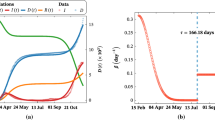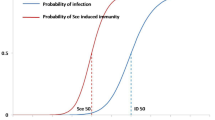Abstract.
Compartmental models have been adapted to derive temporal epidemic forecasting systems for imitating the transfer of HIV infection between those with different behaviours or rates of risk activity. Alternatively, models with regional compartments, which forecast disease incidence in both space and time, have emerged as a response to the challenge of anticipating the pandemic pathways of this infection. This paper combines these frameworks to obtain properties for a multiregion model that also contains demographic compartments. Section 2 begins by showing how the stability conditions (starting thresholds) for a purely regional model are a special case of the existing conditions that have been derived for the general compartmental framework. Then, these results are extended to encompass a regions with compartments design. Section 3 presents an analysis of the population mixing relationships that are embedded in all these specifications. Here, the topics include the maintenance of contact symmetry, the representation of alternative partner selection behaviours, and the identification of core populations for the diffusion of HIV infection. The discussion considers how these theoretical findings might be applied to disease prevention.
Similar content being viewed by others
Author information
Authors and Affiliations
Additional information
Received: 23 November 1998/Accepted: 4 August 1999
Rights and permissions
About this article
Cite this article
Thomas, R. Stability and mixing conditions for HIV/AIDS models with regional compartments. J Geograph Syst 1, 347–365 (1999). https://doi.org/10.1007/s101090050018
Issue Date:
DOI: https://doi.org/10.1007/s101090050018




